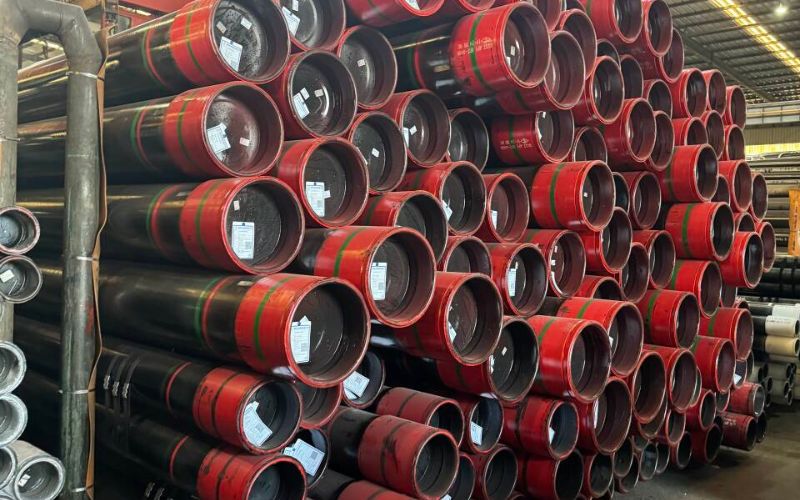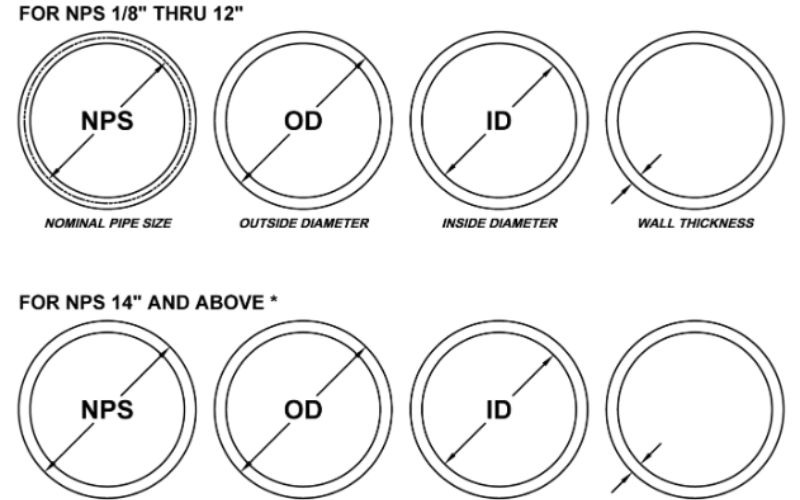In modern construction, pile foundations serve as a significant aspect, providing stability and strength to structures created over scattered terrains. When faced with either soft soil, uneven terrains, or huge loads, pile foundations are in demand to ensure safety and longevity. This all-inclusive site enables you to explore the fascinating world of pile foundations through the classification of various types of piles, the piling methods, and the basics of deep foundation. You will be acquainted with how such engineering creations work, where they are used, and why they enter every time from the design of gigantic skyscrapers to extensive bridges. Let us dissect the way pile foundations are conceived in a manner that is both insightful and entertaining, imparting knowledge that equips an individual to grasp their significance in a broad field of construction.
Understanding Pile Foundations
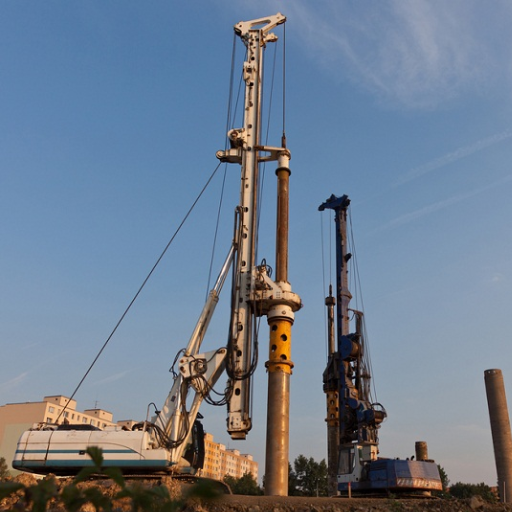
Deeper into the foundations, pile foundations carry their weight from the structure onto soil or rock layers with sufficient bearing capacity. These foundations are installed when the surface soil is not competent enough to sustain the weight of a structure, ensuring stability and durability. Materials could be any like concrete, steel, or wood, and these are of two broad classifications: end-bearing piles, which pass the loads straight into the hard soil or rock, and friction piles, which use frictional drag on the sides. Such foundations can sometimes be a typical facility for difficult soils. Areas with loose or expansive soil or areas near water bodies are examples of such circumstances. By distributing the weight properly, these pile foundations prevent settlement, ensuring longevity to structures.
Definition of Pile Foundations
In lighter terms, pile foundations stand as the backdrop in modern construction with utmost considerations for stability and load distribution, fitting different projects. Where the surface soil is very weak to bear the load of the structure, the use of pile foundations is more suitable. From research and field studies, it can be seen that pile foundations propagate both vertical and horizontal loads and hence can be used for buildings, bridges, marine structures, and high-rise towers.
Another metric shines light on their efficacy- pile foundations can transfer a load from 10 tons in the smaller projects to over 200 tons in heavy infrastructure depending on the soil condition and materials for piles. Whereas common materials for making piles include concrete, steel, and timber, selection depends on the demand put by the environment and load requirement of the project. Further evolution in geotechnical engineering brought about varieties of piles- driven piles, bored piles, and screw piles, which can be selected depending on site particulars.
Some modern pile foundation systems also mitigate the hazards of liquefaction and seismic activities. In earthquake-prone areas, driven steel piles are preferred as these can penetrate deep down into stable soil layers. Then, pre-stressed concrete piles are becoming more and more popular because of their durability and corrosion resistance in a hostile environment, especially in coastal and marine conditions.
Hence, in the final analysis, pile foundations end up ensuring structural integrity by tackling settlement issues, transferring loads, and adapting to challenging geotechnical environments. Owing to the wide range of uses and demonstrated performance, they remain a critical component in realizing safe and resilient infrastructure.
Purpose of Pile Foundations
Pile foundations are an essential solution that transfers the load of a structure to a deeper soil or rock strata when the soil close to the surface is not strong or stable enough. They are specifically designed to pose and therefore solve problems like weak soil strata, high groundwater levels, or uneven settlement, thus becoming the backbone of engineering phenomena from sky-high buildings to offshore platforms.
Another significant function would be to provide their bearing capacity under compression and tension force. For example, driven piles would take loads beyond 100 tons, being suitable for bridges and tall buildings. It is concluded that, therefore, the presence of pile foundations in zones of earthquake decreases considerably the risk of failure of the structure by way of absorbing energy from ground motion.
The modern age has been able to refine the efficiency and environmental adaptability of pile foundations. On one hand, we have the prefabricated concrete piles and steel piles that provide high strength and durability, while on the other hand, the green alternative solutions such as geosynthetic-encased stone columns offer a greener solution under certain conditions. Also, modern installation methods such as pile driving monitoring and load test help to enhance pile performance by minimizing errors during construction.
From erecting tall structures on soft clays to anchoring wind turbines in deep waters, pile foundation acts as a versatile and highly reliable engineering solution addressing the needs of the past and future construction chapters.
Overview of Deep Foundations
Deep foundations ensure that the load of any given structure is transferred into deeper layers of stable soil or rock, thereby securing safety and durability over the unusually determined site situations. Consequently, deep foundations impart a particular significance in cases where surface soils are too weak or unpredictable and hence, afford shallow foundations no weight-bearing or support.
Foundation systems have primarily consisted of. Piles, drilled shafts (jacked caissons), and piers; others come in small subgroups. Among all types of foundations, pile-foundations continue to be one of the most implemented for larger projects. It consists of slender columns driven or drilled deep into the earth to a firm stratum bearing the load. Drilled shafts use excavation methods to construct wide, cylindrical columns into the soil directly and provide an ideal solution wherever heavier rather concentrated loads need treatment.
The advances in deep foundations keep pace with construction requirements of the present-day world and modern changes. Large-diameter piles are reported to be capable of providing load capacities well in excess of 3,000 tons in unique applications that demand such high-capacity foundation systems. On the other hand, an upgrade in material technologies, such as the use of high-strength concrete and corrosion-resistant steel, has added to the enhancement stages and durability of these foundations.
Real-time monitoring techniques, such as strain gauge sensors and load testing performed remotely, have become a game-changer in providing continuous feedback and enabling engineers to observe and follow-up during and after construction, hence guaranteeing a high level of precision. Recent data projects a staggering projection of more than 5% CAGR in the global deep foundation construction market over the next decade, induced by urbanization and increasing need for resilient infrastructure, onshore as well as offshore.
Thus, deep foundations tell a glorious story of ingenuity; they witness the synthesis of innovative material and technique with precision methodology to support the most ambitious structures on earth across varied terrains.
Types of Pile Foundations

Types of pile foundations include end-bearing, friction, bored, driven, screw, and composite piles, each designed for specific load and soil conditions.
| Type | Details |
|---|---|
|
End-Bearing |
Load on tip |
|
Friction |
Load on sides |
|
Bored |
Drilled holes |
|
Driven |
Hammered piles |
|
Screw |
Helical design |
|
Composite |
Mixed materials |
|
Material |
Steel/Concrete |
Concrete Piles
Concrete piles are among the more common deep foundations, being valued for durability, high loading capability, and the ability to accommodate different types of soil. These piles being constructed with reinforced or prestressed concrete, making them apt for projects that require strong support for the life span of the project. Concrete piles can be broadly classified into two categories of precast concrete piles and cast-in-situ concrete piles.
In the case of precast, the piles would be manufactured away from the site, usually in a controlled environment, which helps guarantee uniform quality and structural performance. Then these piles would be transported to the site and driven into the ground by using a pile driver. This method works well when the project requires fast installation and precise design specifications.
On the other hand, cast-in-situ piles go in situ, simply by drilling a hole into the ground on site and then filling it with concrete: quite often steel rebars would be placed inside for added strength. This method would thus work well for situations where noise and vibration from pile driving must be kept to a minimum or where some level of site-specific customization is needed.
With the advances in both materials and techniques, concrete piles are now performing better than before. For example, the use of high-strength concrete mixes and new reinforcement technologies has increased the load carrying capacity of piles to a point that they are now used in the construction of complex structures like high-rise buildings, bridges, and industrial plants. From a few industry reports, it can be understood that the global precast concrete piles market is set to witness considerable growth, backed by escalating investments in infrastructure and urban development projects all over the world.
Concrete piles remain an undying feature of modern construction, providing the perfect blend of efficiency, adaptability, and sustainability in response to the challenges posed by several adverse working environments.
Timber Piles
Piles of timber, traditionally, have long been termed foundation kinds in modern structures built on soft soils, especially in swamps. Considered as the places where beauty grows, timber piles, in essence, are environmentally sound and cost-effective. They are light and easy to handle, making small to medium-sized construction projects, mainly residential and minor commercial buildings, best suited for their utility.
New technologies in timber treatment have dramatically increased the service life of timber piles as well as their resistance to decay, insects, and moisture. For example, pressure-treated timber piles might last up to 30-50 years or more, depending on the soil conditions and how well they have been maintained. Also, given that timber piles are inherently flexible, they are quite beneficial for absorbing seismic or vibratory forces transmitted through the ground during an earthquake.
Usually, timber piles range from 6 to 18 inches in diameter and 20 to 100 feet in length, depending upon project requirements. During construction, the piles are driven into the earth until they reach a load-bearing stratum, where they then serve as a foundation for the structure above. Treated timber piles are lightweight but can transmit loads varying from about 10 to 40 tons per pile under typical site conditions.
While they do not possess the typical strength of concrete or steel piles, timber piles are nevertheless the option for situations where sustainability and cost-effectiveness matter a lot. Also, since they perfectly meld with natural scenery, timber piles find their favorites on docks, piers, and waterfront applications.
Steel Piles
Steel piles are highly versatile and durable foundation elements in construction projects where the utmost strength and loading capacity are required. Being of steel, these piles serve heavy-duty purposes in the creation of buildings, bridges-a high-rise structure-and marine installations. Steel piles are preferable owing to their tensile strength and nature to stand harsh weather conditions, especially in uneven terrains and where dynamic loads are at stake.
One of the greatest attributes offered by steel piles is flexibility in design. They exist in various forms such as H-piles, pipe piles, and box piles, granting engineers the option to choose the most appropriate design to fit the specific site conditions. For example, H-piles work better in penetrating dense soils and rocky layers, whereas pipe piles are better at transferring loads onto deep strata.
Steel piles being recycled and reused pave the way for protection of the environment through eco-conscious construction practices. Also, improvements in corrosion protection, such as galvanization and epoxy coatings, lengthen the lifetime of the steel piles, thus making them a very cost-effective option for projects with a long-term horizon. Based on reports from the industry, there has been a steady increase in worldwide demand for steel piles, spurred on by infrastructure investments and urban development projects.
Talking about load capacities, steel pile exhibits extraordinary load effect. For example, pipe piles bearing axial load capacities of a few thousand tons, depending on the nature of the diameter and wall thickness, should be able to stand in high-demand situations like offshore drilling platforms, heavy industrial complexes, where paramount importance is given to structural reliability; adaptability to a whole lot of existing conditions, including soft soils, seismic sites underlines its significance to modern foundation engineering.
Piling Methods in Construction
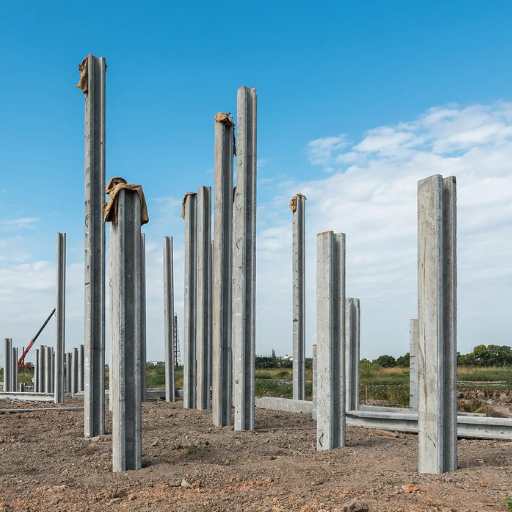
Piling methods in construction include driven, bored, screwed, end-bearing, friction, and silent piling, each suited for specific soil and load conditions.
| Method | Details |
|---|---|
|
Driven |
Hammered piles |
|
Bored |
Drilled holes |
|
Screwed |
Rotated in soil |
|
End-Bearing |
Load on tip |
|
Friction |
Load on sides |
|
Silent |
Noise-free |
|
Movax |
Vibratory tech |
|
Material |
Steel/Concrete |
Introduction to Piling Methods
The piling method in construction is selected depending on various factors such as the type of structure, the soil conditions, and the load requirements. Terrorist Among the most common piling methods are: Driven Piles, Bored Piles, Screw Piles, and Sheet Piling. Each of these methods has its characteristics, advantages, and limitations, which sometimes fit one situation better than the other.
Driven Piles are prefabricated piles usually made of concrete, steel, or timber, which are driven into the ground by means of a hydraulic hammer or by vibrating. The method works very well with dense soils and is hence considered for bridges, offshore structures, and high-rise buildings. Modern driven piles are capable of very high load capacities, with recent installations going far beyond piles capable of over 1,000 tons load.
Bored Piles include drilling holes deep into the ground and filling them with reinforced concrete. The technique is suited to urban areas, where vibration must be minimized to avoid disturbing other structures nearby. Bored piles can be more than 100 meters in-depth and are commonly found in the foundation of high-rise buildings, bridges, and dams.
Screw Piles are sophisticated helical piles that are screwed into the ground with the help of special machinery. The process offers fast and safe installation, especially in soft or unstable soil conditions. Areas for which screw piles find applications include foundations for renewable energy sources, i.e., wind turbines and solar farms.
Sheet Piling is most used by retaining walls or excavation supports. The working principle is to drive in large interlocking steel sheets to stabilize the soil and keep water ingress at bay. This is very helpful in waterfront construction and deep basement excavation projects.
By the analysis of site conditions and project requirements, one could choose the piling methods that will guarantee structural stability and efficiency. These methods are being boosted by innovations and design by data, where presently the highest state of reliability and adaptiveness is attained environmentally.
Pile Driving Techniques
Pile driving is a critical step in construction, ensuring that piles are installed correctly to provide robust support for structures. There are several widely-used pile driving techniques, each suited to specific project needs and site conditions.
- Impact Driving
This traditional method utilizes a heavy hammer dropped onto the pile head, driving it into the ground through repeated impacts. Modern hydraulic hammers are often used to reduce noise and vibrations, making this technique practical in urban areas. The energy delivered by impact driving is typically measured in kilojoules (kJ) and can range from 20 to 300 kJ depending on the equipment used.
- Vibratory Driving
Ideal for sandy or loose soil, this technique uses vibration to reduce soil resistance, allowing the pile to sink smoothly into the ground. Vibratory pile drivers can achieve high driving speeds—often driving piles at a rate of 30-60 feet per minute—offering faster installation in suitable soil conditions.
- Press-in Method
This silent and vibration-free method uses hydraulic jacks to press piles into the ground. It is particularly advantageous for sites near existing buildings or sensitive environments. Studies show significant noise reductions compared to impact driving, making it increasingly favored for urban projects.
- Jetting
Jetting utilizes a high-pressure water stream to loosen soil at the pile tip, reducing friction as the pile is driven downward. This method is frequently combined with other techniques for challenging soil conditions, such as dense sands or compacted clays. Jetting flow rates can range from 350 to 600 gallons per minute, depending on the soil characteristics and pile design.
- Drilled Displacement Pile Driving
Combining aspects of traditional driving and drilling, this method displaces soil laterally as a pile is inserted, rather than removing it. This minimizes spoil produced on-site and increases shaft friction, enhancing load-bearing capacity. Recent developments in this technique have demonstrated up to a 15% improvement in load efficiency compared to conventional driven piles.
Recent advancements in pile driving technology include real-time monitoring systems that measure driving resistance, hammer performance, and pile integrity. These data-driven tools provide engineers with precise control over the installation process, optimizing pile alignment and overall structural reliability. By selecting the appropriate pile driving technique, stakeholders can ensure efficient project execution while meeting environmental and regulatory standards.
Drilled Piles: Advantages and Applications
Drilled piles offer high load capacity, minimal vibration, and versatility, making them ideal for limited access areas and various soil conditions.
| Aspect | Details |
|---|---|
|
Load Cap. |
High |
|
Vibration |
Minimal |
|
Versatility |
High |
|
Soil Types |
Various |
|
Access |
Limited areas |
|
Noise |
Low |
|
Applications |
Foundations |
|
Flexibility |
Design/Excavation |
Sheet Piles and Their Applications
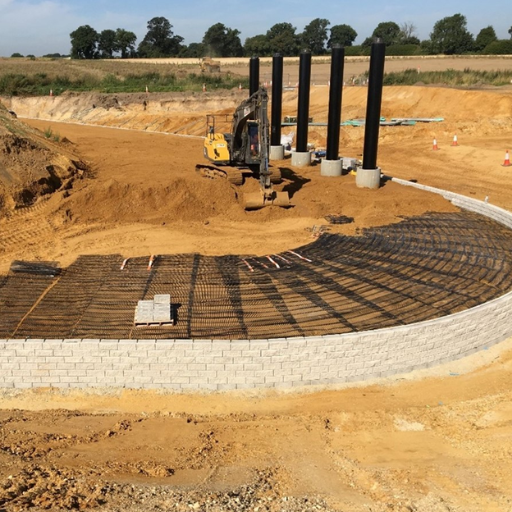
Sheet piles are a key element in the construction industry. They are widely used for earth retention and excavation support. Usually, steel, aluminum, or vinyl materials are used to install these sheet piles by driving them through the soil to form a barrier that prevents soil movements and infiltration of water. These structures are particularly useful when constructing retaining walls, cofferdams, and flood protection walls. This versatility offers them an advantage wherein they can adapt to different soil conditions to provide stability for both temporary and permanent solutions. Given the possibilities of installing and removing them by oneself, sheet piles certainly prove to be a good sustainable option for any modern engineering project.
Overview of Sheet Piles
Sheet piles offer numerous advantages in a wide range of applications due to their durability, adaptability, and cost-effectiveness. A steel sheet pile is made from steel, meaning high structural strength and resistance to bending under heavy loads. Vinyl and composite sheet piles, meanwhile, are gaining attention due to their light-weight nature and corrosion resistance in marine and highly corrosive environments.
Industry sources state that steel sheet piles, if maintained properly, can last more than 50 years, making them a preferred choice in infrastructure that needs to stand for long durations. Advances in manufacturing processes equally facilitate production of interlocks able to provide watertight connections, important for cofferdams and flood protection systems. Moreover, depending on requirements and soil conditions, these sheet piles can be installed to depths of 15-40 feet and more, giving credence to versatility.
Sustainability, in general, refers to having a positive impact on construction; in fact, reusable and recyclable sheet piles minimize environmental impact. They can be installed quickly with little labor and machinery required, further shortening project timelines and cutting costs. This sustainability factor, together with reliability and flexibility, makes sheet piles a key solution for both urban and rural projects.
Steel Sheet Piles: Properties and Uses
The unique properties of steel sheet piles make them construction-essential materials, including structural strength and durability, rendering them capable of withstanding heavy forces. These are formed by interlocking sections of steel-alloy materials that create endless walls for a variety of engineering applications. Their uses include retaining walls, seawalls, cofferdams, and systems of flood protection, as well as containment control or foundation work.
Steel sheet piles provide a significant load-bearing characteristic, meaning they more than adequately support any imposed loads under extreme-pressure conditions. For example, advanced steel grades such as S355GP and S390GP are often used, offering tensile strengths of approximately 355 MPa and 390 MPa respectively. These specifications make them capable of managing significant structural loads in demanding environments. Furthermore, these piles resist corrosion especially due to treatments of coatings or galvanization, thereby prolonging their service life in metallurgical or underground settings.
Recent cutting-edge developments have increased the versatility associated with sheet pile usage. Light-gauge steel sections are fabricated for circumstances where minimum ground disturbance is required, whereas hot-rolled and cold-formed sheet pile designs meet the pertinent application needs-to wit: hot-rolled sheet piles have maximum stiffness and suit stiff soils, whereas cold-formed piles, in comparison, are less expensive and easy to install.
To date, steel sheet piles remain ever in demand as an aspect towards sustainable construction. They boast a recycle ratio of more than 98%, thus conform to the global move in cutting construction waste. Likewise, the modular design of the materials allows them to be easily recovered for reuse, greatly reducing the environmental footprint from their use.
Steel sheet piles are tested and proven to be reliable choices for projects ranging from bigger urban infrastructure to smaller-scale flood defense systems. Their ability to accommodate changing soil and water conditions keeps them relevant as an extremely important tool in civil engineering.
Installation Techniques for Sheet Piles
The installation of sheet piles is a crucial process that requires precision and the selection of appropriate techniques based on factors such as soil type, project scale, and environmental considerations. Modern advancements in sheet pile installation have significantly improved efficiency and minimized environmental disruptions.
- Vibration Driving Method
This method utilizes vibratory hammers to drive sheet piles into the soil effectively. It is commonly used for loose to medium-dense soil conditions and offers high-speed installation. Vibratory hammers can achieve driving speeds up to 4-5 feet per minute, making it a preferred choice for many large-scale projects.
- Impact Driving Method
For denser or harder soil types, impact hammers are used to pound sheet piles into place. This technique is effective in ensuring that piles penetrate through challenging substrates, including rocky terrains. Although slower than vibratory methods, impact driving delivers robust results in demanding conditions.
- Press-In Method
The press-in method employs hydraulic or static pressing equipment to push sheet piles into the ground without generating significant noise or vibrations. This eco-friendly and low-impact technique is particularly well-suited for urban areas where noise restrictions or sensitive surroundings are concerns. It is also effective in maintaining the structural integrity of adjacent buildings.
- Jet-Assisted Driving
This technique combines traditional driving with water jetting to reduce soil resistance during installation. Jet-assisted driving is ideal for cohesive soils and helps improve the efficiency of pile penetration. The addition of high-pressure water jets ensures smoother operations in challenging environments.
- Pre-Augering
To facilitate the installation process in dense or highly compacted soils, pre-augering involves pre-drilling holes ahead of the driving process. This technique decreases resistance and prevents bending or distortion of sheet piles, optimizing alignment and structural stability.
By selecting the most suitable installation technique and integrating advanced technology, construction projects can achieve both high performance and minimized environmental impact during sheet pile installations.
Advantages of Using Pile Foundations
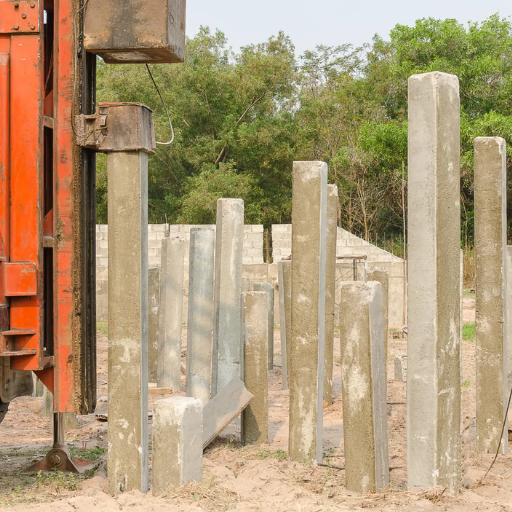
- Load Distribution: Pile foundation systems transfer heavy structural loads to deeper, more stable soil layers, ensuring safety and durability.
- Suitability for Hard-Strange Soil Conditions: Being ideal in the top layer of soils that are soft, loose, and unstable, piles reach stronger strata below for support.
- Increased Structural Stability: Pile foundations protect structures more against wind forces, earthquake forces, and soil erosion.
- Versatility: Therefore, they can be used for building structures, bridges, and marine installations.
- Minimization of Settlement: Since it is founded on a stable layer, the set-up pile foundation helps reduce uneven settlement, thereby ensuring good long-term behavior.
Load-Bearing Capacity
Pile foundations are provided with the function to efficiently take loads and transfer them to strata of soils deeper down toward more stable soils or rock. Depending on the type of pile, material used, the diameter of the pile, and what sort of subsurface it is driven into, carries its load.
To cite one example, concrete piles can carry loads between 200 and 500 tons per pile, whereas, steel piles are said to bear beyond 500 tons, depending upon size and construction. Timber piles are limited in their capacity and generally range between 15 to 30 tons. Hence, timber piles are for lighter structures.
The capacity is provided for by two main components, i.e., bearing at the base and skin friction. End bearing piles transfer the entire structural load directly to the strong stratum, such as solid rock or well-compacted pavement gravel. On the contrary, skin friction piles share the load through adhesion and friction between pile surface and surrounding soil. Piles may act together through these mechanisms, making them more efficient and ensuring structural stability.
Comprehensive testing takes place through static load testing and dynamic pile analysis, and such exhaustive testing plays an important role in knowledge about pile performance. New methods are ever emerging to ensure more accurate calculations and maximize the efficiency of the load-bearing system; hence, pile foundations remain a reliable choice in different construction environments.
Stability in Challenging Soil Conditions
Advanced geotechnical analysis and selection of the appropriate pile type and piling installation method are considered when confronted with an adverse soil condition. When I review the soil properties with care, I can be far more certain of those relevant criteria that will ensure stability, such as end bearing piles on firmer strata or friction piles where necessary. I use modern tests and monitor construction very carefully to remove some uncertainty regarding the performance of the foundation as intended.
Cost-Effectiveness in Construction Projects
Applying the principles of being cost-effective to construction projects calls for a wholesome approach that melds the trifecta of quality, efficiency, and optimization of budget. By embracing the latest technologies in construction, such as Building Information Modeling (BIM), project managers can start identifying design and schedule clashes much earlier, thereby mitigating costs pertaining to errors and accidental reworks. BIM, for instance, can reduce up to 20% of the project cost by enhancing collaboration and allocation of resources.
Another area that should be considered in cost control is the selection of materials. Using sustainable materials would lessen the impact on nature, such as recycled steel or engineered wood, which also may provide discounted costs for procurement. Prefabrication and modular construction methods, however, save dramatic time for the project, which further cuts down on labor and overhead costs. Industry reports suggest modular construction can shrink construction time by 30-50%, which translates into major cost savings for any budget.
Tasked with setting up efficient decision-making hinges on the data-driven approach. Equipped with cost estimation software tools that enable accurate calculation of budget information by evaluating material costs, rates for labor, and regional variations can reduce budget overruns by up to 15%, thereby supporting long-term financial stability.
Energy-efficient designs and renewable technologies, like solar panels or advanced insulation, would stand to provide substantial savings in the long run as utility bills and maintenance demands are brought down. In the beginning, investments might be high, but the utility and maintenance saving would offer ROI within a matter of years.
Integrating cutting-edge tools with sound planning and resource-efficient construction practices allows the construction project to uphold cost-effectiveness versus high-performance outputs.
Common Challenges in Pile Construction
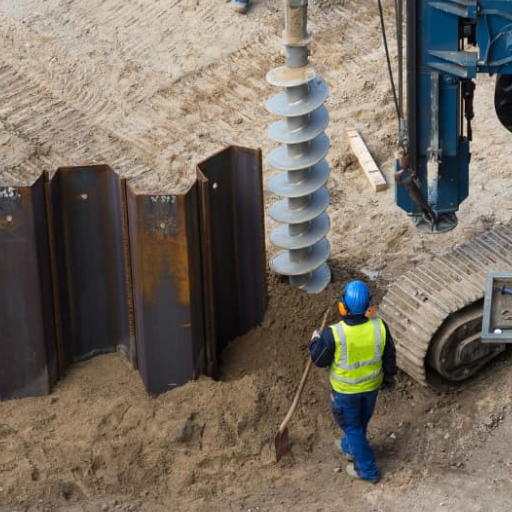
Usually, pile construction faces problems such as soil conditions, accessibility, and equipment constraints at various stages. Sometimes, uncontrollable soil variegations can lead to gilded pile instabilities, prompt further tests, or adjustment measures. Inaccessibility of the site might be a hindrance to transport pile materials and installation activities, mainly where piles lie in an urban or remote area. Equipment failures and inadequacies might cause one to lose time and extra costs. The solutions to these problems involve extensive site investigation, using suitable equipment, and managing the whole project for the final realization of the objective.
Soil and Site Conditions
Understanding the soil and site attributes is relevant to the successful construction of any project comprising pile foundations. The differing pairs of soils, such as clay, silt, sand, and gravel, differ in strength, permeability, and compressibility and thus warrant the determination and execution of piles. For instance, clay soils, more so soft clays, tend to have a low bearing capacity and hence require piles to be longer so as to reach deeper, more stable strata, while silty or sandy soils usually provide for better stability almost due to increased drainage.
Geotechnical investigations help in the analysis of subsurface conditions of a particular site. Some of the modern techniques, namely the Standard Penetration Test (SPT) and Cone Penetration Test (CPT), deliver information with regard to soil density, shear strength, and possible obstructions. Basically, research has shown that in urbanized areas with highly stratified soil, inconsistency in properties can exist with an occurring chance above 30%, making detailed analyses imperative.
Groundwater conditions affect the operation of pile driving in many ways. In high water table conditions, excavation becomes a cause of soil instability to a point that dewatering or use of special piles, such as driven piles with sealed tips, need to be considered.
Also, the site topography is relevant. On sloping terrain, extra stabilization or special pile designs may be required to prevent differential settlement. Industry estimates show that where construction is carried out on an uneven site, materially more cost of 25% goes into ensuring stable footing, showing the need for good planning.
By addressing these issues through detailed geotechnical studies followed by judicious engineering solutions, the risks inherent in such projects can be mitigated with respect to both safety and cost.
Environmental Considerations
Before working in construction, it is imperative that the developers consider the environment and take measures to avoid or minimize adverse environmental impact. Above all, natural habitat must be conserved; pollutants must be treated; and waste must be recycled or disposed of properly. Construction activities are said to attribute nearly about 38% of the total annual CO2 emissions from the earth mostly due to the application of concrete and materials which consume more energy in their production. Hence, practicing green methods, which include the use of recycled, renewable materials coupled with green building systems, considerably help in reducing environmental burden.
A water management plan is required because a construction project may impair water flow and use huge water quantities during its operation. Several methods, such as a stormwater management system and water recycling programs, can be implemented to deal with these issues. Preservation of the local ecosystems is also warranted, where many projects include measures to prevent soil erosion, protect biodiversity, and limit deforestation. Thus, by adopting environmentally friendly construction practices, teams go further than just compliance with law and are signatories to macro efforts in climate resilience, which is an upward turning trajectory for green infrastructure development.
Regulatory and Compliance Issues
The labyrinthine maze of regulatory and compliance issues in construction has to be negotiated carefully, keeping global, national, and local standards in mind. Each construction project is governed by laws pertaining to safety, environment, labor rights, and zoning, among others. One crucial area of focus concerning occupational safety lies within the realm of the United States OSHA: safety standards are prescribed for use at job sites. Depending on recent statistics, construction workplace injuries have lowered by around 25% in the past 20 years with the implementation of safety laws.
Environmental compliance continues to become more demanding, with governments pushing for lowered carbon emissions from various human activities and environmentally friendly ways of building. Buildings, for example, account for almost 39% of carbon emissions worldwide, giving impetus to frameworks like LEED (Leadership in Energy and Environmental Design) certification in fostering more sustainable construction. Many places also contend with being penalized for noncompliance, from fines for exceeding noise pollution thresholds to improper waste disposal.
Labor laws have also been expanded to ensure workers are treated fairly and paid accordingly, with measures targeting wage theft as well as those that ensure workers are trained for certain hazardous jobs. Compliance with these laws helps protect the workers and fosters higher project quality by maintaining an experienced and motivated workforce. To excel in such an evolving rockscape would require a robust monitoring mechanism in place complemented by regular audits and training on current legislations and best practices, making sure projects remain true to development as well as responsibility.
Reference Sources
- Title: Measured Pile Setup During Load Testing and Production Piling: I-15 Corridor Reconstruction Project in Salt Lake City, Utah
- Authors: William J. Attwooll et al.
- Journal: Transportation Research Record
- Publication Year: 1999
- Citation Token: (Attwooll et al., 1999, pp. 1–7)
- Summary: This paper discusses the measured pile setup during load testing and production piling for the I-15 Corridor Reconstruction Project. It provides insights into the methodologies used for measuring pile setup and the implications for engineering practices in pile construction.
- Title: Measured Time Effects for Axial Capacity of Driven Piling
- Authors: J. Long et al.
- Journal: Transportation Research Record
- Publication Year: 1999
- Citation Token: (Long et al., 1999, pp. 15–18)
- Summary: This study investigates the time effects on the axial capacity of driven piles. It presents a detailed analysis of how time influences the load-bearing capacity of piles, which is crucial for understanding pile performance over time.
- Title: Numerical Procedure for Predicting Pile Capacity—Setup/Freeze
- Authors: H. Titi, G. Wije Wathugala
- Journal: Transportation Research Record
- Publication Year: 1999
- Citation Token: (Titi & Wathugala, 1999, pp. 25–32)
- Summary: This article introduces a numerical procedure for predicting pile capacity, focusing on the setup and freeze effects. The methodology involves computational modeling to enhance the accuracy of pile capacity predictions.
Frequently Asked Questions (FAQs)
What are the different types of pile foundations used in construction?
There are various types of pile foundations, including concrete piles, timber piles, steel pipe piles, and flat sheet piles. Each type serves a specific purpose based on the soil conditions and load requirements of the construction project. For example, prestressed concrete piles are often used for their strength, while timber piles are an alternative for lighter loads.
How is the length of the pile determined during the construction process?
The length of the pile is determined based on the load it must support and the depth of the soil layers. Engineers assess the soil conditions, including the bearing capacity, to ensure the pile foundations can adequately transfer loads into the ground. This evaluation often involves soil testing and analysis.
What is the role of piling rigs in the piling process?
Piling rigs are specialized machines used to install piles into the ground. They are equipped to handle various piling techniques, including driving, boring, and rotary bored piling. The efficiency and precision of piling rigs significantly impact the overall quality and stability of the pile foundations.
What construction projects typically require pile walls?
Pile walls are commonly used in projects that involve heavy loads, such as bridge foundations, retaining walls, and waterfront structures. They help support adjacent structures and prevent soil erosion. Steel sheet piling and interlocking steel sheet piles are often employed for their durability in such applications.
How do piles transfer loads in a construction project?
Piles transfer loads from the structure above into the ground below. This is achieved through friction along the surface of the pile and by end bearing at the pile tip. The design of the pile, including its material and length, is crucial to ensure it can safely support the loads from the structure.
What are replacement piles and when are they used?
Replacement piles are used when existing piles are damaged or inadequate for the current load requirements. They are installed alongside or in place of the original piles to enhance the support capacity of the foundation. This process is often necessary in rehabilitation projects to ensure structural integrity.
What advantages do steel sheet piles offer compared to other types of piling?
Steel sheet piles offer several advantages, including high strength, durability, and ease of installation. They are resistant to corrosion and can be reused in different projects, making them a cost-effective option. Additionally, they can be driven into the ground quickly, minimizing disruption to surrounding areas.
What is involved in the pile driving process?
The pile driving process involves using a pile driver to hammer piles into the ground. This technique is effective for various types of piles, including driven piles and steel pipe piles. The method allows for rapid installation and is often used in construction projects where time is a critical factor.
How are timber piles constructed and what are their applications?
Timber piles are constructed by cutting and treating wood to enhance durability. They are often used in lighter load applications, such as residential foundations and shore works. Timber piles were historically common, but advancements in materials have led to a decline in their use, although they remain an effective choice for specific projects.



